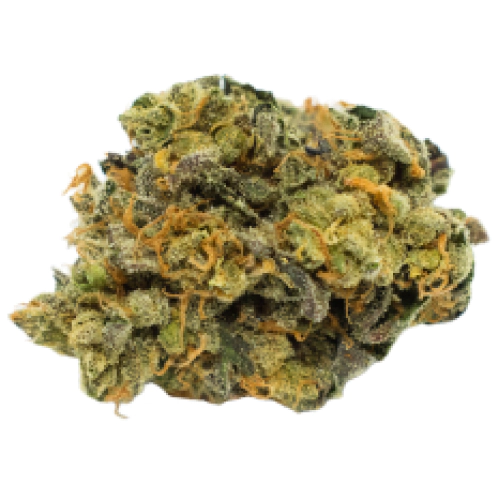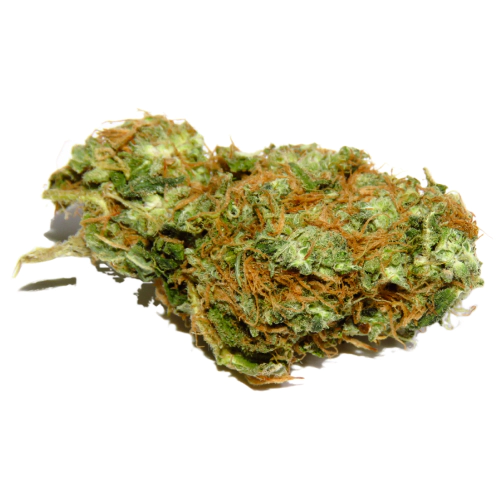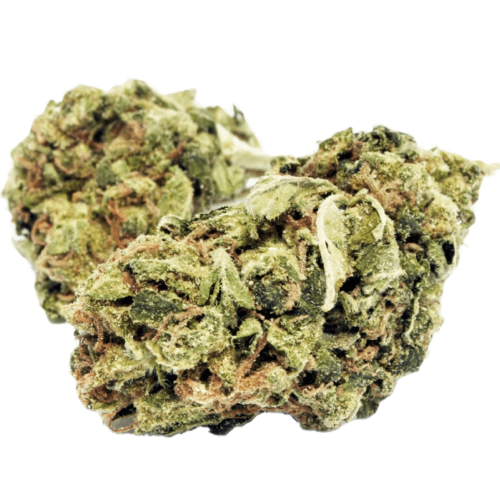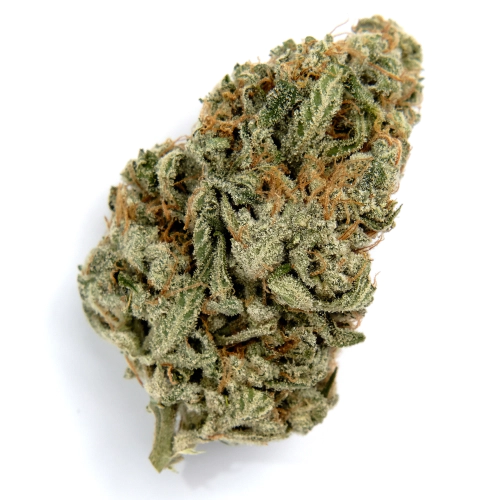Skunk Valley Haze
Cannabinoid THC Dominant
THC 22 - 26%
CBD 1.15 - 1.36%
Effect Focused
Side Effect Insomnia
Flavor Pungent
All AboutSkunk Valley Haze Strain
THC
CBD
Potency
The Skunk Valley Haze strain is a powerful sativa-dominant hybrid that has quickly become a favorite among cannabis enthusiasts for its potent effects and distinctive flavor profile. This cannabis variety is a cross between Skunk #1 and Haze, resulting in a strain that offers both mental stimulation and physical relaxation. The flavor profile of Skunk Valley Haze is a delightful mix of pungent skunk, sweet citrus, and earthy undertones, making each puff a memorable experience. The dominant terpenes, including myrcene, caryophyllene, and limonene, contribute to its aromatic and therapeutic properties.
Effects and Medical Uses
The Skunk Valley Haze weed is celebrated for its uplifting and energizing effects. Upon consumption, users typically experience an immediate wave of euphoria and mental clarity, which can help alleviate stress and boost creativity. This is followed by a gentle body relaxation that eases muscle tension and promotes a sense of well-being. These balanced effects an excellent choice for managing conditions such as anxiety, depression, and chronic pain. Additionally, it is highly regarded for its ability to help with fatigue, providing a burst of energy that can be beneficial for daytime use. Medical users also find it effective for alleviating headaches and mild pain, making it a versatile option for various ailments.
Cultivation Details
Growing Skunk Valley Haze weed strain can be a rewarding experience for both novice and experienced cultivators. One effective method for cultivating this marijuana plant is using organic growing techniques. This approach involves using organic soil and natural fertilizers to enhance the growth and potency of the plant while maintaining environmental sustainability. Skunk Valley Haze thrives in both indoor and outdoor environments, although it prefers a controlled indoor setup where temperature and humidity levels can be carefully managed. The strain is relatively resistant to pests and diseases, making it a sturdy choice for growers. Regular pruning and proper feeding will ensure a robust harvest of dense, resinous buds.
Side Effects
Simply let us know how this strain tastes or write a detailed review.
Skunk Valley Haze Strain Cannabinoids
| THC | Tetrahydrocannabinol, or THC, is a major cannabis chemical compound. It is a psychoactive element that stimulates dopamine release and induces euphoria or happiness. THC-rich strains may be helpful with such conditions as lack of appetite, chronic pains , etc. It is considered to be the primary active marijuana component. | 22 - 26% |
| CBD | Cannabidiol, or CBD, is a major compound in cannabis, which is non-psychoactive. It is also proved to counteract the side effects of the second major component THC. CBD is widely used for medicinal purposes in rubs, oils and so on. It is helpful in muscle pain cases, may treat arthritis and migraines. Even Greeks used it against pain, while Queen Victoria applied it to get rid of menstrual cramps. | 1.15 - 1.36% |
| CBC | Cannabichromene, or CBC, is a minor cannabinoid, meaning that its quantity in cannabis is quite little. Though it has the same origin as CBD and THC, it is different in functions. Without any psychoactive effects, it is an efficient cannabis compound in combating acne and depression. CBC produces analgesic, antibacterial and anti-inflammatory effects. | 0.42 - 0.46% |
| CBG | Cannabigerol, or CBG, is one of the minor cannabis compounds in adult plants. On the other hand, young ones contain a lot of this antibacterial and anti-inflammatory component. During the growth, CBG is converted into different cannabinoids, mostly THC and CBD. The compound itself increases appetite and decreases eye pressure. | 0.34 - 0.49% |
| CBN | Cannabinol, or CBN, is a trace element in cannabis that is considered to be mildly psychoactive. It appears from oxidation THC, exposed to light and heat. CBN is mostly contained in old cannabis and in traditional hashish. It is effective against insomnia, bacterial infections and appetite loss. | 0.27 - 0.43% |
| THCV | Tetrahydrocannabivarin, or THC-V, is a compound contained in cannabis in trace amounts. Even though it is close to THC molecularly, it is different in effects. This compound may be psychoactive only in large amounts. THC-V reduces blood sugar, controls appetite, stimulates bone growth, etc. African Sativa strains are the richest in THC-V. | 0.01 - 0.03% |
Skunk Valley Haze Terpene Profile
| Carene | Carene (also known as Delta-3 carene) is a terpene found in rosemary, lemons, pines, and cedars, offering citrusy and cypress aroma. Studies on mice showed that carene provides anti-inflammatory effects, as well as promotes bone health and chronic pain relief. | 0.14% |
| Pinene | Pinene is one of the most widespread terpenes in nature, found in pine trees, basil, nutmeg, parsley, and rosemary. Cannabis containing terpene (alpha-pinene or α-pinene) boasts a strong pine scent. Pinene is responsible for anti-inflammatory, pain-relieving, and anti-anxiety effects. | 0.05% |
| Myrcene | Myrcene (also known as β-myrcene) is one of the most common terpenes found in cannabis, representing more than 20% of the modern marijuana terpene profile. Myrcene has a distinct earthy, musky flavor, resembling cloves. It is responsible for calming and soothing effects of weed. Myrcene is also found in hops, thyme, mango, lemongrass, guava melon. | 0.14% |
| Camphene | Camphene is terpene common for carrots, pepper, dill, fennel, nutmeg, thyme, as well as other fruits and vegetables. Camphene has a damp, pungent, herbal, minty aroma with pine undertones. In cannabis, mostly found in Indica strains. Camphene causes cooling sensations, having anti-inflammatory, antibiotic, antioxidant, analgesic, and antifungal effects. | 0.04% |
| Humulene | Humulene (also known as α-humulene) is one of the major terpenes found in cannabis, contributing to woody, earthy, spicy, herbaceous, and, mainly, floral aromas of cannabis. Used in modern medicine, humulene offers anti-inflammatory, antibacterial, and appetite suppressant effects, which have been well-researched by pharmaceutical companies. | 0.04% |
| Limonene | Limonene (also known as d-limonene) is the second most common terpene in nature and the third most common terpene in cannabis. It has a powerful citrus aroma and can be found in all citruses, including lemons, oranges, grapefruits, limes, juniper, etc. Limonene is known to elevate moods and provide anxiety, depression, and stress relief. | 0.04% |
| Linalool | Linalool (also known as beta linalool, linalyl alcohol, linaloyl oxide, and p-linalool) is one of the rarest terpenes found in cannabis, mostly in small quantities. Linalool is known for its spicy and lavender aroma, bringing relaxation and calming effects. It is also said to provide anti-inflammatory and analgesic properties that can be useful for athletes. | 0.12% |
| Phellandrene | Phellandrene (also known as alpha- and beta-phellandrene) is one of the rare terpenes found in cannabis with antihyperalgesic and antidepressive properties. Phellandrene contributes to a minty, woody, and mildly citrus aroma in cannabis. Previously confused with limonene and pinene, phellandrene was eventually distinguished as a separate terpene common for eucalyptus. Also, it could be found in mint, dill, black pepper, cinnamon, parsley, pine, and lavender. | 0.04% |
| Caryophyllene | Caryophyllene (also known as beta or b caryophyllene) is a terpene found in many herbs and spices, such as black pepper, basil, rosemary, and oregano. Cannabis high in caryophyllene delivers a strong spicy, peppery aroma, resembling cinnamon and cloves. Caryophyllene offers potent anti-inflammatory and sedative effects. | 0.39% |
| Total terpenes content | 1.00% |
Growing Info
Similar Strains
THC 17 - 22%
CBD 0.05 - 0.56%
Effect Giggly
Flavor Pungent
THC 23 - 24%
CBD 0.65 - 0.8%
Effect Giggly
Flavor Spicyherbal
THC 25 - 27%
CBD 0.62 - 0.76%
Effect Relaxed
Flavor Sweet
THC 11 - 15%
CBD 0.2 - 1.41%
Effect Concentrated
Flavor Lime
THC 21 - 33%
CBD 0.17 - 0.84%
Effect Aroused
Flavor Pine
THC 10.25 - 11.5%
CBD 0.02 - 0.49%
Effect Giggly
Flavor Tree fruit

THC 13 - 15.88%
CBD 3.63 - 3.86%
Effect Sleepy
Flavor Woody
THC 16 - 20%
CBD 0.65 - 0.82%
Effect Calm
Flavor Spicyherbal
THC 10 - 12%
CBD 0.02 - 0.28%
Effect Calm
Flavor Pine

THC 17.25 - 19.25%
CBD 0.38 - 0.87%
Effect Happy
Flavor Pungent
THC 13.67 - 17%
CBD 0.55 - 0.79%
Effect Happy
Flavor Sweet
THC 14 - 18.33%
CBD 0.37 - 0.62%
Effect Happy
Flavor Citrus
THC 20 - 24%
CBD 0.54 - 0.71%
Effect Tingly
Flavor Berry













Be the first and share your opinion
Write a Review